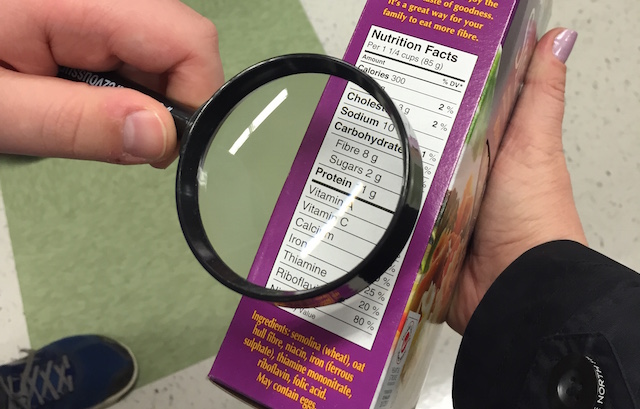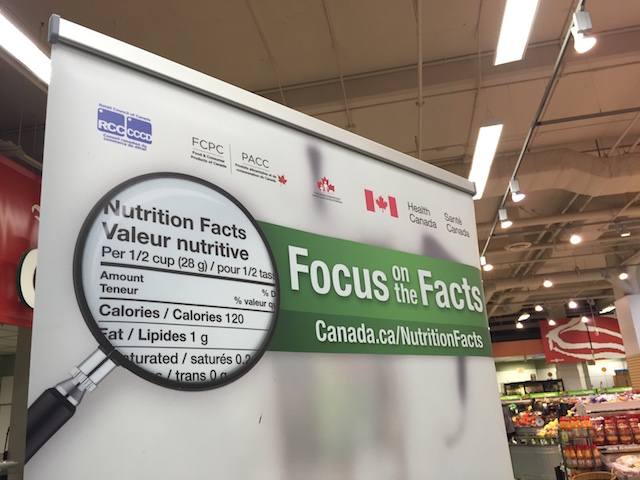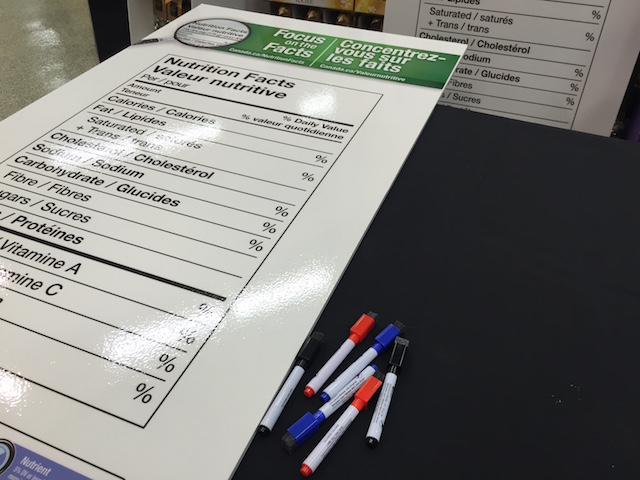Getting to Know the Nutrition Facts Table
I like to think of grocery shopping as a mission that I need to complete. Sure, I have a list and items to collect and check off, but there’s more to it. Can I get in and out of the store in record time? Will I be able to smoothly maneuver the self checkout, choreographing the scanning and bagging of products? Do I have a coupon for that or loyalty points to redeem? I realized last week however, that I was leaving one very important factor of out of my routine. I rarely, if ever, look at the Nutrition Facts table (“NFt”) on my products — but that changed.
Getting to Know the Nutrition Facts Table
The Nutrition Facts table: get to know it, and love it. During an event hosted by Food & Consumer Products of Canada (“FCPC”), Health Canada, Retail Council of Canada (“RCC”), the Canadian Federation of Independent Grocers (“CFIG”), the Nutrition Facts Education Campaign (“NFEC”), I learned three simple steps that I can add to my grocery mission that will help me make better health choices, while still allowing me to shop at my leisure (or go for that new checkout record).
- Serving Size. It’s at the very top of the table, you can’t miss it. By checking a product’s serving size, you can:
Understand how much of a nutrient you are eating
Compare calories and nutrients between 2 similar packaged food products
Compare it to the amount you actually eat - Daily Value. The % DV is found on the right-hand side of a nutrition facts table. It is a guide to help you make informed food choices. It shows you if the serving size has a little or a lot of a nutrient:
5% DV or less is a little
15% DV or more is a lot - Ingredients. Reading the ingredient list is both important and useful. It can help you:
Check if a food product has a certain ingredient.
Avoid ingredients in case of a food allergy or intolerance.

The event, that took place at Save-On-Foods on Cambie, was emceed by Vancouver TV personality, author and chef, Kristina Matisic. Armed with deerstalkers and magnifying glasses, I turned into the Sherlock Holmes of nutrition with my nephew, alongside other local bloggers and their children. Our challenge was to #FocusontheFacts, searching the store for two items from three categories then return, fill out the NFt for each, and compare.
In teams, we picked up two items from the Grains and Pastas category, two from Soups and Sauces, and two from Breakfast Foods. When we began to fill out the NFt for grains and pastas, I discovered that serving size is very key — and that sometimes labels like “Smart” don’t always mean the product contains the very best ingredients. One item I picked up was very high in trans fats and sodium, even though it appeared to be a very healthy brand.
The NFt, found on most packaged food products in Canada, is key to making an informed choice for you and your family in a few easy steps. The campaign encourages Canadians to start with the Serving Size and then use the % DV to choose the nutrients you want a lot or a little of. By learning how to find out if a product has more of the ingredients I want, and less of those I want to avoid, my next grocery mission will include using the NFt, to make sure only the very best ends up in my cart, in my cupboards, and in my body.
For more information, visit canada.ca/nutritionfacts and follow Healthy Canadians on Twitter, the #FocusontheFacts tag, and Healthy Canadians on Facebook.













1 Comment — Comments Are Closed
The problem with making sense of nutrition labelling is that the ‘serving size’ varies from item to item, making it extremely difficult to accurately compare (for example) crackers to crackers. There should be a standard serving size for each category of food.